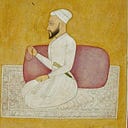Earlier I had constructed a map on the Muslim population of British Punjab before and after partition, so I figured I’d do one for Hindus as well.
Observations from the 1941 figures:
- Hindus are a minority in virtually every Tehsil where Punjabi speakers predominate. This is to be expected, as Hinduism traditionally had a weak footprint in Punjab, particularly outside urban centers. Khatris are the principle Hindu tribe in northern-Punjab, while Aroras assume that role in the south.
- Eastern Pahar (modern Himachal Pradesh) is overwhelmingly Hindu. The region has historically acted as a transition zone between the Punjabi plains to the south, Tibetan mountains to the north, and Nepali hills to the east. The principal Hindu clans in the area are Rajput, many of whom can trace their origins to medieval chiefs of the Indo-Gangetic plain who fled to the hills in the wake of Muslim conquest.
- Haryana is majority Hindu but has a significant Muslim minority. Principal Hindu tribes include the Jats in the central region, and Ahirs (today called Yadavs) in the south. Rajputs can be found across the territory, but were traditionally subordinate to their more numerous Muslim counterparts in the northern and western regions.
Post-Partition observations per the 2011 figures:
- Nearly all the Hindus were expelled from Pakistani-Punjab.
- The Hindu percentage has risen considerably in Haryana, which is unsurprising, given most of the Muslims were expelled from the region. Another contributing factor is the arrival of Hindu refugees from Pakistan after partition, and to a lesser extent, from Indian-Punjab following the communal clashes of the 1980s.
- The Hindu percentage has also risen in Indian-Punjab relative to the Sikhs, a trend for which there are many causes. Firstly, the Indian Government’s refusal to recognize the Ad Dharmi religion and provide equal affirmative action to non-Hindus has effectively forced many low-caste Punjabis to convert to Hinduism. Second, the heavy emigration of Sikhs out of India following their persecution at the hands of Hindu Extremists, particularly in the 80’s and 90’s. Third, the low fertility rate of Sikhs, exacerbated by the practice of female infanticide. Fourth, the immigration of Hindus from across India into Punjab in search of economic opportunity.
That’s all for now, I’ll make a similar map at some point for Sikhs.
Sources:
2011 Census of India, 1941 Census of Punjab, and the 1911 Census of Punjab. Patiala, Nabha, and Jind Tehsil figures from 1911, adjusted for 1941 population change using neighboring Tehsils for Malwa (Faridkot, Moga) and Puadh (Malerkotla, Ludhiana). Tehsil data for 2011 harmonized to British-Punjab tehsil map, minor discrepancies and errors may be present.
